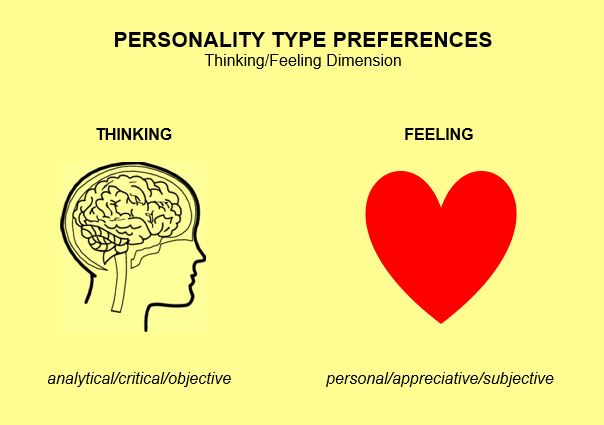Have you attended meetings where some staff rarely offer information or suggestions? Or, you learn the library director will reduce the children’s programs because of budget cuts and think the director is unfair and mean to the children? These are just two examples of workplace strife due, at least in part, to personality type. We all have valid viewpoints in these situations rooted in our personality. We maintain our viewpoints, or preferences, throughout our lives (Bayne, 2004; Briggs Myers, McCaulley, Quenk, & Hammer, 1998), and use them to guide us through life. This post will explain some preferences often associated with staff conflicts to help librarians work smarter and embrace the diversity of personality types.
Carl Jung, the Swiss psychologist, first theorized personality types in his book Personality Types in 1921. Katharine Briggs and her daughter Isabel Briggs Myers later developed an assessment called the Myers-Briggs Type Indicator to make his theory practical. The assessment measures four dimensions of personality, but this article will only discuss two due to space limitations. Ever since, people have learned about themselves and others so they can become better in their communications and relationships.
The first dimension is the extraversion and introversion dimension. Since extraverts are comfortable talking in groups and thinking out loud and introverts focus on their inner world and mull things over (Briggs Myers et al., 1998), their views of one another can cause issues at work. Extraverts believe introverts do not participate enough, or not at all, in meetings and introverts wish extraverts would give them some quiet time to think things over (Bayne, 2004). Staff should reflect on the value each one brings, not their negative perceptions. For example, extraverts are great at running meetings and introverts are great at taking meeting notes. This does not suggest that staff should not reach out of their comfort zone, but rather they should be tapped for their natural abilities. Combining the best of both worlds will bring better results and greater satisfaction to all.
Another dimension that may cause conflict in the workplace is the thinking and feeling dimension. In the budget scenario above, the director had a thinking preference, so she assessed and made decisions based on logical and impersonal considerations (Briggs Myers & Myers, 1995). She fairly and rationally cut programs across the board to make the cuts equitable. Of course, the librarian who had a feeling preference was beside himself because he assessed and made decisions on personal considerations and values (Briggs Myers & Myers, 1995). He sees the cuts as an attack on the children who want their story times and other literacy programs after school.
Again, all staff bring important viewpoints to a situation. For feelers, it is important to consider the analytical process of thinkers and for thinkers to consider the humanity perspective of feelers. Both preferences are valid and important to a library, so make decisions collaboratively so staff with different preferences will be satisfied with the result and learn from each other. This approach will reduce animosity and usually build better relations among the staff.
Understanding each other is the key to working together. Personality type can help foster that understanding by revealing how we interact with and respond to each other and our world. Embracing the diversity of personality types will enrich your workplace and your life.
by Francis A. Alix, M.Ed., BCC, BCCC
Career Counselor/Coach
iSchool MLIS Student
References
Bayne, R. (2004). Psychological types at work: An MBTI perspective. London: Thomson Learning.
Briggs Myers, I., McCaulley, M. H., Quenk, N. L., & Hammer, A. L. (1998). MBTI Manual: A Guide to the development and use of the Myers-Briggs Type Indicator. Palo Alto, CA: Consulting Psychologist Press.
Briggs Myers, I. & Myers, P. B. (1995). Gifts differing: Understanding personality type. Mountain View, CA: Consulting Psychologists Press.
